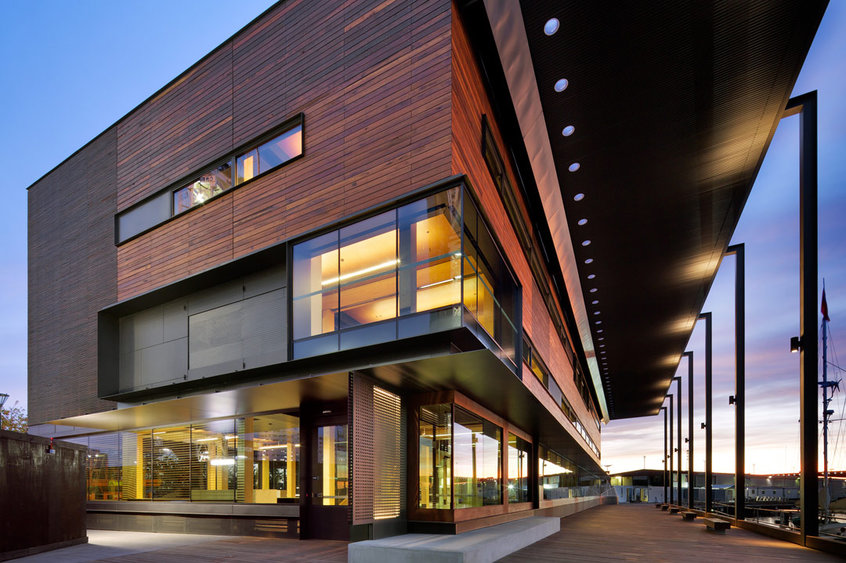To overcome barriers to innovation in traditional construction, Singapore (pictured) has set up “pre-project innovation consortia” comprising developers, designers, engineers and manufacturers who will develop green technologies that project teams find it hard to implement themselves.
Launched by the city state’s Economic Development Board (EDB), the so-called PPICs will push for an “integrative” design approach to buildings in order to speed up the innovation cycle in construction.
Singapore is well positioned to serve as a Living Lab where companies can develop, trial and commercialise innovative urban solutions in a real-life setting before scaling up for regional markets– Mr Yeoh Keat Chuan, EDB’s managing director
Two such consortia have already been formed, involving Australian property giant Lend Lease, New Zealand engineer Beca and Singaporean architects DP Architecture. Lend Lease will use its consortium to develop cross-laminated timber for use in Singapore.
The EDB said that innovation in construction now is done in silos, with companies working only on technologies in their own fields. Given the high costs and stiff contractual obligations in property development, there is rarely enough time to carry out meaningful innovation once a project is awarded, the EDB said.
The PPICs are designed to help Singapore take a global leadership role in the commercialisation of green building technologies, specifically for tropical climates. The EDB quoted projections that by 2050 Asia’s urban population would increase from 1.9 billion now to 3.3 billion, with China and India accounting for 60% of the increase.Â
The EDB said, “there has never been a more pressing need to develop smart, sustainable and cost-effective building solutions for the Asian urban environment.”
“Singapore is well positioned to serve as a Living Lab where companies can develop, trial and commercialise innovative urban solutions in a real-life setting before scaling up for regional markets,” said Mr Yeoh Keat Chuan, EDB’s managing director.Â
He said the PPIC concept is the first of its kind in the world, and has attracted strong participation by developers, architects, engineers and building technology and systems vendors.
How it will work
In the PPICs a consortium leader will identify problems and research topics. The EDB said that property developers and architects would usually be selected for this because their job scopes require them to set the vision for building projects.Â
Each consortium leader will partner building technologies and material players with meaningful R&D and engineering capabilities in Singapore to co-develop prototypes. The prototypes and research could then be deployed in projects of the consortium leaders in Singapore and across the region.

Library at The Dock, Victoria Harbour, Melbourne, a Lend Lease scheme using cross-laminated timber (Victoria Harbour)
The EDB says that this way building tech and materials firms will get help commercialising the solutions they devise, while the consortium leaders get something special for their development – a “win-win situation” for everyone in the “building ecosystem”, the EDB says.
Already, two PPICs have formed. Australian property giant Lend Lease will lead one of them, focusing on commercial offices, education and healthcare facilities. The other will be jointly led by Singapore’s DP Architects and New Zealand-based engineering consultant Beca. (Beca’s links to Singapore’s green building agenda are deep: in 2009 the chair of Beca’s operations in Asia, Lee Chuan Seng, was named the first president of Singapore’s new Green Building Council.) This PPIC will tackle retail buildings and healthcare facilities.Â
Other companies participating in these two PPICs include 3M, Asahi Glass Company, Bosch, cement-maker Holcim, Johnson Controls, Philips Lighting and United Technologies’ Building & Industrial Systems. The National University of Singapore will also take part.
The EBD said these two consortia are projected to spend US$7.8m in research over the next three years.Â
Francis Lee, CEO of DP Architects, said, “The PPIC initiative will greatly facilitate access to manufacturers of innovative building material with established R&D facilities in Singapore. This will accelerate the process to bring new solutions to realisation.”
For its part, Lend Lease has already declared the innovation it hopes to spearhead with its PPIC: cross-laminated timber, or CLT.
CLT is made by binding layers of timber at 90 degrees with non-toxic adhesives to produce a solid timber panel. Lend Lease used it to build the world’s tallest timber apartment building, called Forté, in Melbourne, and Library at The Dock, a library and community centre at Victoria Harbour in Melbourne.
Lend Lease has now obtained in-principle acceptance to use it in Singapore.
Lend Lease says CLT comes from wood harvested from sustainably managed forests and is digitally designed and prefabricated to cut waste and boost speed of construction.
“CLT could revolutionise the built environment in Singapore by delivering a quantum leap of up to 40% improvement in construction productivity, in a sustainable way,” said Rod Leaver, Lend Lease’s Asia CEO. “Through this consortium, we hope to create a CLT Living Lab to partner with the industry and academic partners in further creating smart, innovative and sustainable buildings for the future.”






